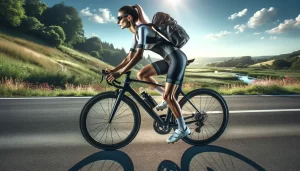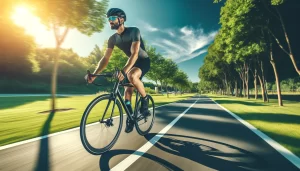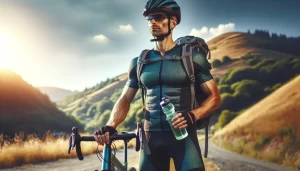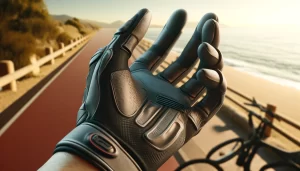Cameras for cyclists are not just tools; they are game-changers in how bikers navigate and document their daily commutes and adventurous escapades. Whether you’re weaving through urban traffic or cruising down serene country lanes, these devices offer more than just a means to capture beautiful vistas—they provide a robust layer of security and accountability.
By recording your rides, you have the power to capture every moment of your journey, turning routine trips into opportunities for reflection and storytelling. Imagine being able to relive your favorite routes or analyze your cycling performance to improve your skills.
Cycling cameras empower riders to do just that, making every ride a potential learning experience or a shared adventure. As we delve deeper into the myriad ways these cameras can enhance your cycling life, from safety enhancements to creating mesmerizing video content, you’ll discover why integrating a camera into your cycling regimen is becoming indispensable for modern cyclists.
Let’s explore how these tiny guardians are revolutionizing the cycling world, making every pedal worth documenting.
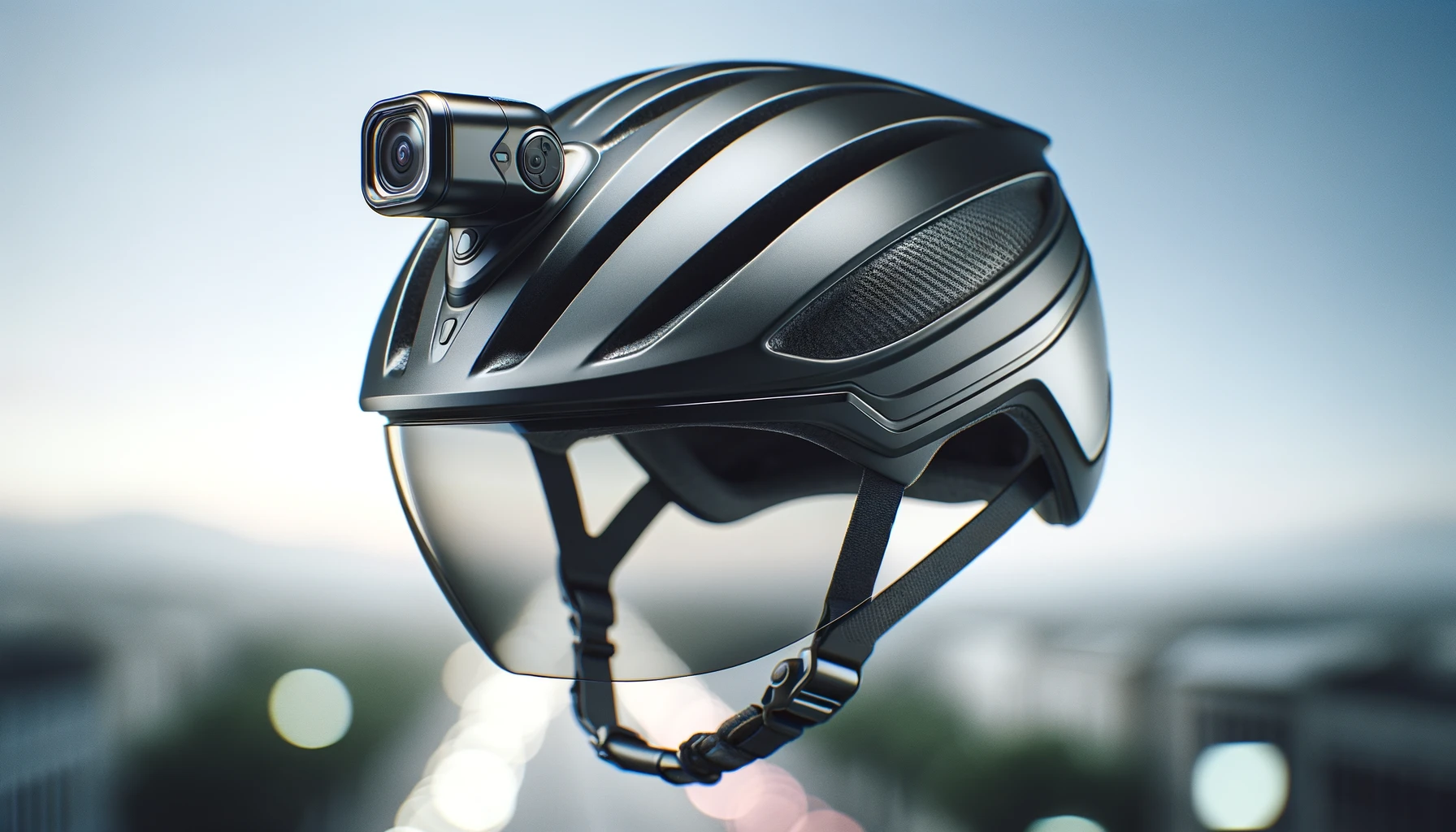
Image Source: Image Generated With DALL-E on ChatGPT
Introduction and Benefits of Cameras for Cyclists
Cycling cameras, both helmet and frame-mounted, are innovative tools that significantly enhance rider safety and experience. These devices record ongoing traffic and surroundings, providing evidence in case of accidents.
They deter potential threats when others know they are being filmed. Moreover, they are invaluable for adventure cyclists who wish to capture and share their journeys visually. The footage can also help in improving riding skills by reviewing performance and making necessary adjustments.
Steps to Utilize Cycling Cameras:
- Choose the Right Type: Decide between helmet or frame-mounted cameras based on your needs.
- Install Properly: Ensure the camera is securely mounted to either the helmet or bike frame.
- Set the Recording Quality: Adjust settings for optimal video quality based on lighting and speed.
- Regularly Check Battery Life: Keep the camera charged and carry backup power for longer rides.
- Review Footage Regularly: Watch the recorded videos to check for any issues on your route or with your riding style.
Helmet Cameras vs. Bike Frame Cameras
Helmet cameras and bike frame cameras serve different purposes and come with their respective advantages and drawbacks. Helmet cameras provide a dynamic, first-person view which changes as the cyclist looks around, offering comprehensive coverage of incidents.
They are typically lightweight and unobtrusive. Conversely, frame cameras give a stable, consistent shot of the road ahead and are less prone to vibrations. They are generally more aerodynamic and can be left on the bike, unlike helmet cameras that need to be removed after each use.
Tips for Choosing Between Helmet and Frame Cameras:
- Assess Your Needs: Determine whether you need dynamic coverage (helmet) or stable, fixed footage (frame).
- Consider Comfort: A helmet camera adds weight to your helmet, so consider if this is comfortable for long rides.
- Think About Security: Frame cameras can be more secure from theft if left on the bike in public areas.
- Evaluate the Setup: Check how each type of camera affects your cycling setup and comfort.
- Decide Based on Use: If you’re primarily recording rides for safety, a frame camera might suffice; for adventure logging, a helmet camera could be better.
How to Choose the Right Camera for Your Bicycle
Choosing the right camera for your bicycle depends on several factors including the purpose of the camera, the type of cycling you do, and your specific needs regarding video quality and ease of use.
Safety-oriented cyclists might prioritize cameras that provide clear footage for incident documentation, while adventure cyclists might look for cameras that offer high resolution and wide-angle views. Battery life, waterproofing, and mounting options are crucial considerations as well. Additionally, the camera’s weight and aerodynamics can affect the bike’s handling and the cyclist’s comfort.
Steps to Select the Perfect Bicycle Camera:
- Define Your Purpose: Understand whether your primary need is safety, adventure recording, or both.
- Research Camera Features: Look for necessary features such as resolution, field of view, and low-light performance.
- Consider Battery Life: Choose a camera with sufficient battery life for the length of your typical rides.
- Check Mount Compatibility: Make sure the camera can be securely mounted on your preferred location on the bike.
- Read Reviews: Look at feedback from other cyclists regarding camera durability and performance in real conditions.
Overview of Types of Bicycle Cameras
Bicycle cameras come in various types, each suited to different aspects of cycling. The most common are helmet-mounted and frame-mounted cameras. Helmet-mounted cameras offer a point-of-view perspective, capturing footage in the direction the rider is looking.
They are excellent for dynamic recordings but can add weight to the helmet. Frame-mounted cameras attach to various parts of the bicycle frame, such as the handlebars or under the saddle, providing a more stable shot of the ride. Some cyclists also use rear-facing cameras to record traffic approaching from behind, which adds an extra level of safety.
Guide to Different Bicycle Camera Types:
- Helmet-Mounted Cameras: Best for capturing a first-person perspective. Ideal for adventure vlogs and safety as it records exactly what you see.
- Frame-Mounted Cameras: Offers stability and a consistent forward-facing view. Suitable for recording rides and monitoring road conditions.
- Rear-Facing Cameras: Increases safety by monitoring traffic coming from behind. Helps in documenting close passes and other traffic incidents.
- Integrated Systems: Some bikes come with built-in cameras and lights. These are streamlined but may offer less flexibility than separate units.
- Choosing Based on Ride Type: Consider the typical environment and style of your rides. Mountain bikers might prefer helmet cams for dynamic angles, whereas road cyclists might lean towards frame cams for a steady frontal view.
How to Use Cameras to Improve Cycling Technique
Cameras have become invaluable tools in enhancing and analyzing cycling technique. By recording rides, cyclists can review their posture, pedaling style, and handling skills in various situations such as climbing, descending, or maneuvering through tight turns.
This visual feedback is essential for identifying inefficiencies or errors in technique that may not be noticeable during the ride itself. For example, a cyclist might discover through playback that they are not maintaining an optimal aerodynamic position, or that their pedaling is uneven, leading to potential power losses.
Advanced video analysis software can further aid in breaking down the footage to provide more detailed insights. Cyclists can use these tools to analyze the angles of their joints, the timing of their pedaling strokes, and even their positioning relative to the bicycle during different phases of a ride. Such analysis can be shared with coaches or used in self-guided training to make targeted improvements.
Over time, this process not only helps in refining technique but also assists in preventing injuries that might result from poor cycling habits. This method of feedback is especially valuable for competitive cyclists aiming to optimize every aspect of their performance.

Image Source: Image Generated With DALL-E on ChatGPT
How Cycling Glasses Can Enhance Performance
Cycling glasses are more than just a protective accessory; they are a crucial piece of performance gear for any serious cyclist. Firstly, they protect the eyes from common airborne irritants like dust, wind, and insects, which can cause discomfort and even impair vision during a ride.
More importantly, they shield the eyes from harmful UV rays, which can lead to long-term eye damage. The clarity and comfort provided by wearing cycling-specific glasses allow riders to maintain focus and visibility, crucial in both training and competitive environments.
Furthermore, cycling glasses can enhance performance by featuring lenses designed to improve visual contrast and depth perception, enabling cyclists to read road conditions and make split-second decisions more effectively.
Some lenses are optimized for various lighting conditions—from bright sunlight to overcast environments—ensuring optimal visibility at all times. For competitive cyclists, transitioning lenses that adjust to changing light conditions can be particularly beneficial. Additionally, the aerodynamic design of some cycling glasses can reduce drag and may slightly improve speed, making them an integral part of a cyclist’s gear arsenal.
Frequently Asked Questions About Cameras for Cyclists
What types of cameras are best for cyclists?
The best type for you depends on your needs. Helmet-mounted cameras offer a point-of-view perspective, capturing exactly what you see as you ride. Frame-mounted cameras provide a stable shot of the road ahead and are great for reviewing route conditions. Consider your primary goals—whether it’s safety documentation, performance improvement, or adventure capturing—when choosing.
How important is video quality in a cycling camera?
High video quality is crucial, especially if the footage is used for safety purposes or capturing fast-paced rides. Look for cameras that offer at least 1080p resolution. For even sharper images, especially in varying light conditions, 4K resolution is a beneficial upgrade.
Can cycling cameras withstand different weather conditions?
Yes, many cycling cameras are designed to be weather-resistant. However, it’s important to check the specific IP rating for water and dust resistance to ensure that the camera can handle the conditions you typically ride in.
Is it legal to record public roadways while cycling?
In most places, it is legal to record in public spaces without the need for consent. However, the laws can vary by region, so it’s advisable to check local laws regarding recordings in public areas to ensure compliance.
Do I need a special mount to install a camera on my bike or helmet?
Most cameras designed for cycling come with mounting equipment suitable for helmets or bike frames. Ensure that the mount secures the camera firmly to withstand the vibrations and shocks of riding.
Incorporating cameras into cycling has transformed how cyclists train, document, and secure their rides. Whether it’s for capturing breathtaking scenery on a mountain trail or providing critical evidence in traffic incidents, the functionality of these devices extends well beyond simple recording.
With advancements in technology, cycling cameras continue to evolve, offering better image stabilization, clearer footage, and longer battery life, which are essential for both casual and professional riders.
As cyclists increasingly recognize the benefits of using cameras, the importance of selecting the right type, ensuring adequate video quality, and understanding the legalities of recording in public spaces becomes more prominent. By addressing these common concerns and questions, cyclists can make informed decisions that enhance their riding experience and safety on the road.
Did you like the article? Be sure to check out more content like this in the Equipment And Accessories category, or see more related content below.

